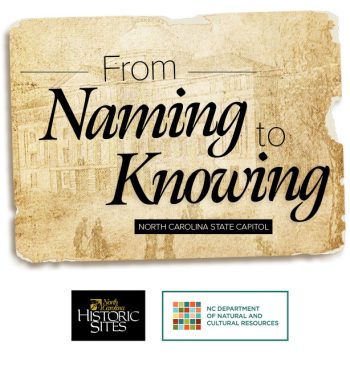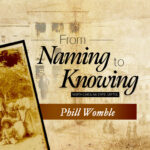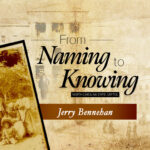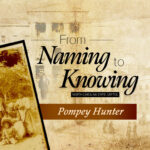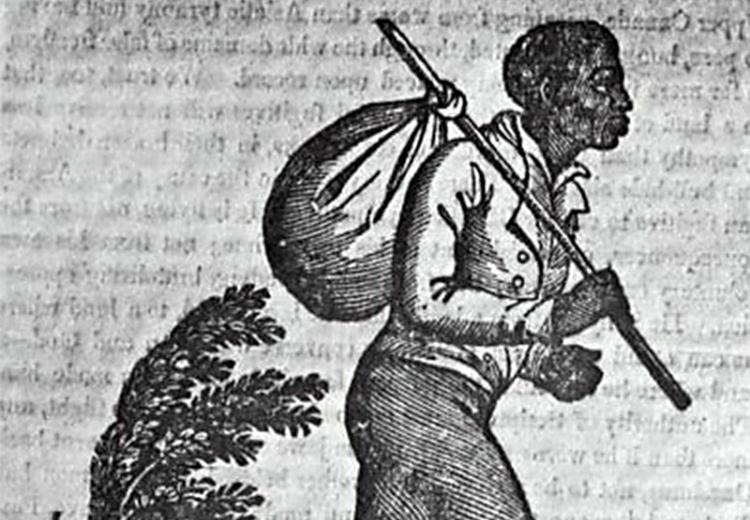
Resistance could come in “everyday” forms and be more subtle, like working slowly or acting purposefully obtuse or confused. Resistance could also be open rebellion, like running away or organizing and preaching about freedom at secret services or meetings. For many enslaved people, survival, the creation of families, and the retention of cultural practices were also acts of resistance against the dehumanization of slavery.
Enslavers depended on the involuntary labor of enslaved people, and enslaved people could use work slowdowns or similar means to control their labor. This form of resistance could often be more subtle. Enslaved people could slow the pace of their work, break tools, feign sickness, or produce work of poor quality. This type of resistance could also be more overt – like what Friday Jones noted in his autobiography. He wrote that he chose to resist slavery by “staying out,” or refusing to work, when he was abused. During the summer of 1854, Friday stated that he refused to work for a month rather than allow himself to be whipped by men to whom he was hired out. (For more information on Friday Jones)
The most common form of overt resistance was seeking freedom or self-emancipating.
In addition to these more everyday forms of resistance, enslaved people sometimes staked more direct claims to freedom. A common form of overt resistance was seeking freedom or self-emancipating. This was a way of taking full control over one’s life and situation.
Tim Harrison, who worked at the Capitol during construction, sought freedom more than once. In July 1836, Tim’s enslaver Robert Harrison placed an ad in Raleigh area newspapers offering a $100 reward to find Tim, who escaped a few months prior. The ad describes Tim as “about 41 years of age, dark complected, 5 feet 10 or 11 inches, well built, [and] has lost some of his jaw teeth.” Robert Harrison surmises that Tim “has made for the Roanoke, as [Robert Harrison] purchased him some years ago from Doctor Simmons Baker of Martin County.” Although the details of Tim’s whereabouts during that time are not known, researchers think that he was apprehended and returned to Raleigh. Once back in the city, he was forced to continue laboring on the construction of the Capitol, as evidenced by a receipt from 1838. It appears Robert Harrison sold Tim to a man named Archibald Drake sometime after he was captured, perhaps as punishment or because he feared Tim would attempt to seek freedom again. In the fall of 1841, three men placed a newspaper ad offering a $30 reward for the return of “Three Negro Fellows, Tim, Anthony and Luke” who self-emancipated while traveling to Alabama. The ad details that “Tim was purchased of Archibald Drake, of Raleigh.” The physical description of Tim and his purported age in the ad share some similarities to the language used in the ad placed by Robert Harrison five years earlier. In Tim’s story, we can see active and overt resistance to enslavement. (For more information on Tim Harrison)
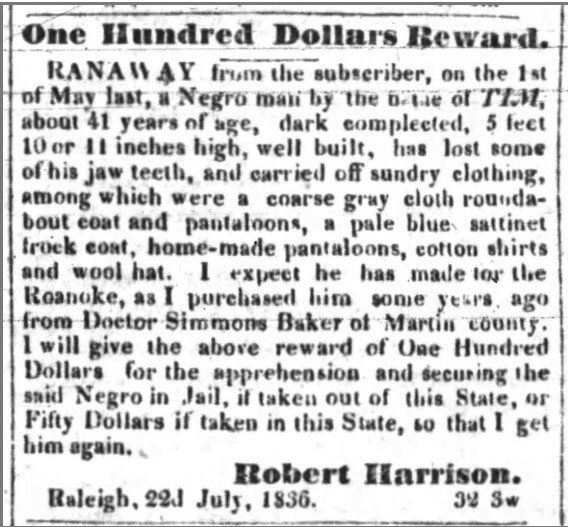
Both covert and overt resistance are present in Cato Haywood’s story. (For more information on Cato Haywood) On March 15th, 1837, Delia Haywood placed a runaway slave ad for “LUKE and CATO.” In the ad Cato is described as “of the ordinary size, very black complexion, and has also lost some of his front teeth.” Delia also noted in the ad that she felt Cato “when spoken to, has rather an impertinent way of expressing himself.” From that phrase, researchers gather that Cato might have been resisting slavery by not showing Delia the veneration she felt she was warranted or by otherwise challenging the strict social norms he was meant to follow as an enslaved person. Cato also sought freedom, leading to Delia placing this runaway ad. Though Cato’s motivations are unknown, enslaved people did not need to be treated “cruelly” to seek freedom; the system that enslaved them was inherently cruel, robbing them of personal autonomy and seeking to suppress their humanity. All acts of resistance – whether they were self-emancipating, challenging the norms of slavery, “staying out” or something else – were ways to seek freedom and autonomy in a system that claimed people as property.
References:
- “Resistance and Abolition.” From the Library of Congress. https://www.loc.gov/classroom-materials/immigration/african/resistance-and-abolition/
- Thompson, Mary V. Research Historian. George Washington’s Mount Vernon. https://www.mountvernon.org/library/digitalhistory/digital-encyclopedia/article/slave-resistance/
- Townrow, Stephanie. “Slave Resistance.” from the Gilder Lehrman Institute of American History, 2016.
